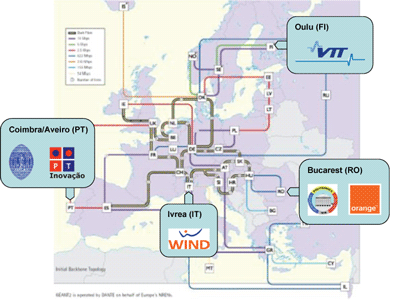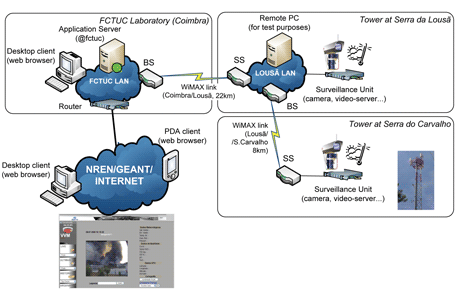In recent years, increasing attention has been paid to the IEEE 802.16 family of wireless local and metropolitan area network (LAN/MAN) standards and its potential to change the field of telecommunications operations and business models. Along with the WiMAX Forum extensions that define an end-to-end architecture, this wireless LAN/MAN technology emerges as a potent proposal for building next-generation wireless networks. According to some projections, 1.3 billion people could have access to WiMAX networks by 2012. Despite the buzz however, there is very little data on what can actually be done with WiMAX, in practice, today. In fact, the current WiMAX-related literature is based primarily on analysis and simulation, making use of the general properties of systems employing Orthogonal Frequency Division Multiple Access (OFDMA), and for the most part drawing on specifics from vendor-provided data.

The primary goal of WEIRD is to establish four cutting-edge research WiMAX testbeds (see Figure 1), which employ both IEEE 802.16d (Portugal and Romania) and 802.16e (Italy and Finland) and interconnect them via GEANT2. In addition to the use of WiMAX as a backhaul and wireless local loop solution, the project considers three specific deployment scenarios: volcano monitoring, telemedicine and fire prevention.
Moreover, WEIRD proposes an architecture that is compliant with recent work by the relevant standardization bodies, such as IEEE 802.16, IETF 16ng and the WiMAX Forum. For example, in order to guarantee full interoperability among different WiMAX vendors, the WiMAX Network Reference Model (NRM) is used as a foundation, and the Next Steps in Signalling (NSIS) framework is used for Quality of Service reservations. Applications employing the Session Initiation Protocol (SIP) enjoy additional services from the WEIRD system. Legacy applications are supported, and the IEEE 802.21 Media Independent Handover standard has also been considered and integrated into the WEIRD architecture. This allows multi-access nodes to take advantage of the WEIRD architecture and optimize seamless handovers between WiMAX (and other) access networks. Furthermore, in order to allow for independence from the particulars of WiMAX vendor equipment, an abstraction layer has been defined that separates the lower-layer specific functionalities from the upper-layer ones. In order to demonstrate the feasibility of the proposed solution the project has also developed a joint prototype, which is deployed on all four testbeds.
Although clearly a testbed-oriented project, to some extent WEIRD also addresses fundamental research issues at the physical layer. For example, the impact of novel WiMAX scenarios at the physical layer was investigated, particularly by modelling and evaluating the operation of WiMAX-based links in difficult mountainous environments. Several multi-antenna techniques were proposed in order to guarantee high performance even under the most stringent conditions. Another pioneering piece of work carried out in this project was the use of Radio-over-Fibre (RoF) in WiMAX systems, a very promising and cost-effective solution to interconnect antennae and base stations.

WEIRD is also active in two important standardization bodies, the IETF and the WiMAX Forum. A team from WEIRD developed proposed extensions to the IETF NSIS Working Group, specifying the Media Independent Handover-Network Layer Signalling Protocol (MIH-NSLP) to transport IEEE 802.21 messages. In parallel, WEIRD also made a performance evaluation of the first internal release of the WiMAX Forum simulation software package; new scheduling and admission control mechanisms have been defined and are being implemented for this package.
Despite the significant interest in WiMAX technology and developments, WiMAX equipment is yet to become readily available at affordable prices. Until recently, only a handful of studies publicly reported results from testbeds or field trials. WEIRD also addresses this lack of data about WiMAX by publishing measurement studies in peer-reviewed articles. For example, measurements relating to the performance of aggregated and non-aggregated VoIP over a fixed WiMAX testbed, as well as IPTV streaming have been recently published.
We expect that WEIRD-developed solutions will have a strong impact on European user communities. For example, the Portuguese Civil Protection agency plans to employ WiMAX and the fire prevention application developed in the project for video surveillance and environmental monitoring in the mountainous regions in central Portugal during the upcoming 2008 fire season (see Figure 2).
WEIRD is a European Integrated Project funded by the 6th Framework IST programme.
Link:
http://www.ist-weird.eu/
Please contact:
Enrico Angori
ElsagDatamat, Italy
E-mail: info![]() ist-weird.eu
ist-weird.eu










